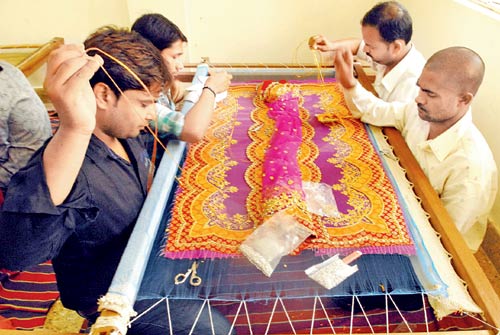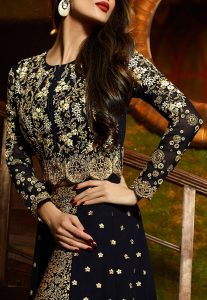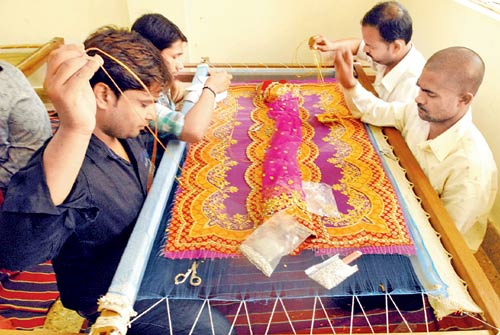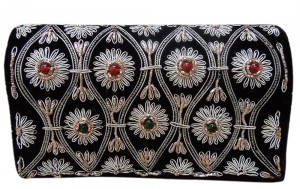
Dabka or Dubka Work

Dabka Work
Dabka (also known as Dapka, Dubka) means ‘spring type of thread or a coiled thin wire’ which is sewed in to create intricate patterns. The wired threads are embroidered on the fabric in such a way that the needle passes through the middle of the design.
In other words, Dabka work is an intricate embroidery or needle and thread work from the lands of Rajasthan. Mostly done in gold, this is done once finished with printing on the fabric. This art is detail-oriented and precise.
History
This embroidery had originated in Rajasthan and the adjoining areas which now belong to the country Pakistan.
The Making of Dabka or Dapka
Dabka is usually done on Silk or Chiffon, and the embroidery is done with the help of Zari threads.
Dabka embroidery employs three to five people to design one piece, the art being so intricate. Once the fabric is done with dying and printing process, Dabka work is done with needle and thread. A cotton cord is stitched on the printed patterns that need to be embellished or embroidered with Dabka. After this, the metal coiled wires or threads are sewed by passing the needle from the middle of the design to give a 3D look. These patterns are usually in motifs of flowers, animals, leaves, birds, mostly peacock, and sometimes, a skillful design of braiding or French knotting can also be done for a rich Dabka design.
Sources of Inspiration
The main inspiration behind the works and the designs comes from the intricacies of nature. Needless to mention, that one may not find a lot of variety in the work as such, but these motifs are anything short of spectacular with their opulent style and grace.
Wearing Dabka in Attire
Dabka being one of the rich embroideries has the elegance of royalty in it. Since the embroidery is heavy, one cannot manage to wear it on a regular basis. Dresses and saris with Dabka work are perfect for traditional occasions and gatherings. Along with the sari or the dress, you need to make sure that, there is ample amount of jewelry.
Maintenance
Maintenance is the key when we speak of such intricate work. It is not going to be too easy though. You cannot machine wash these materials and neither can you soak them in a bucket of water and detergent and wash them manually. Else, dry cleaning is the best option.
Present Day Scenario
The present day scenario regarding Dabka work does not seem too promising. While it is true that, there is a huge amount of demand for this kind of work all over the country and the world, but the workers here, are not being able to enjoy the benefits of this ancient craft. They still have to work in ’unfriendly’ weather conditions, and they do not use the modern equipment which can make their work a little less complicated and easier.
Most of the people who are working for Dabka or ‘Dapka’ embroidery use a simple needle to do their job and the result of the same is rather fascinating. Though the government and various NGOs are trying to help these people, the situation does not seem hopeful, and the revival of this craft has a long way to go.
Interesting Facts and Comparisons
- Dabka work is usually used for Wedding dresses, example lehengas, and Sarees
- In ancient times, it was considered to be an embroidery that showcased wealth and nobility
- Dabka work usually consists of floral motifs and patterns which are used for heavy Saree borders
Categories: Motifs & Embroideries


